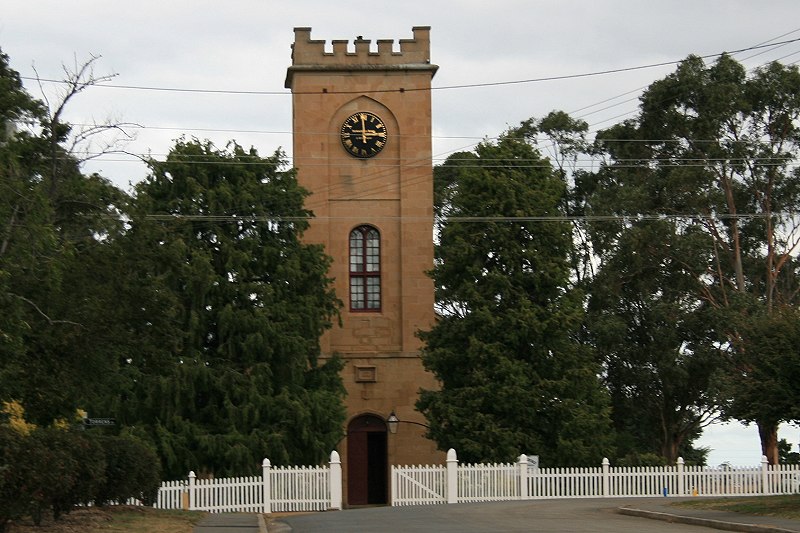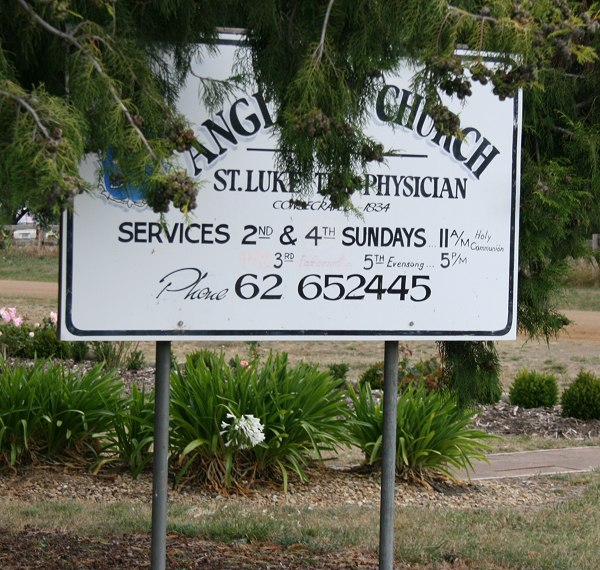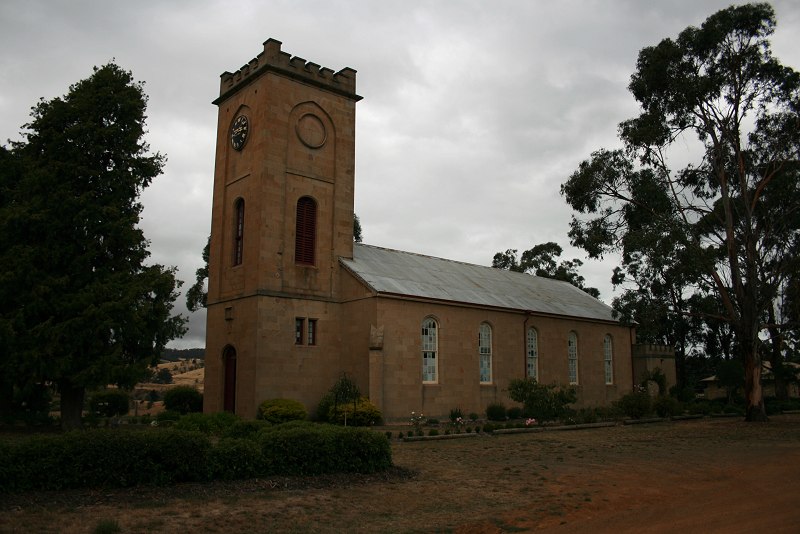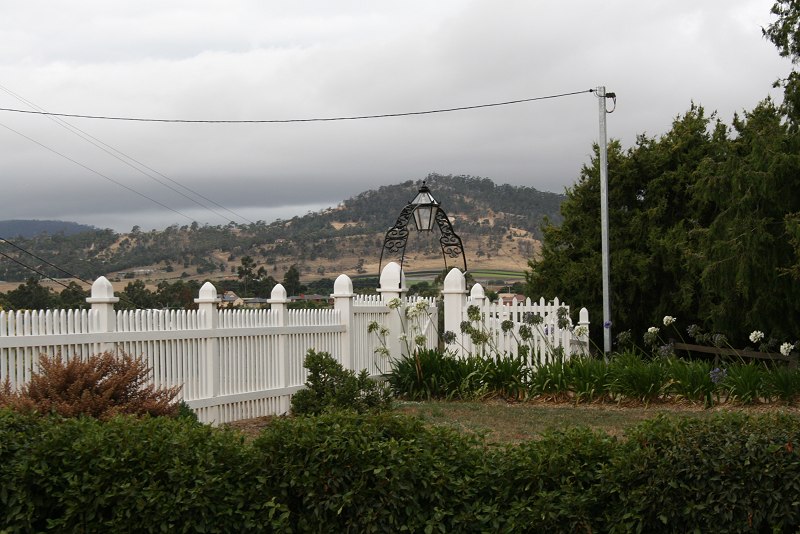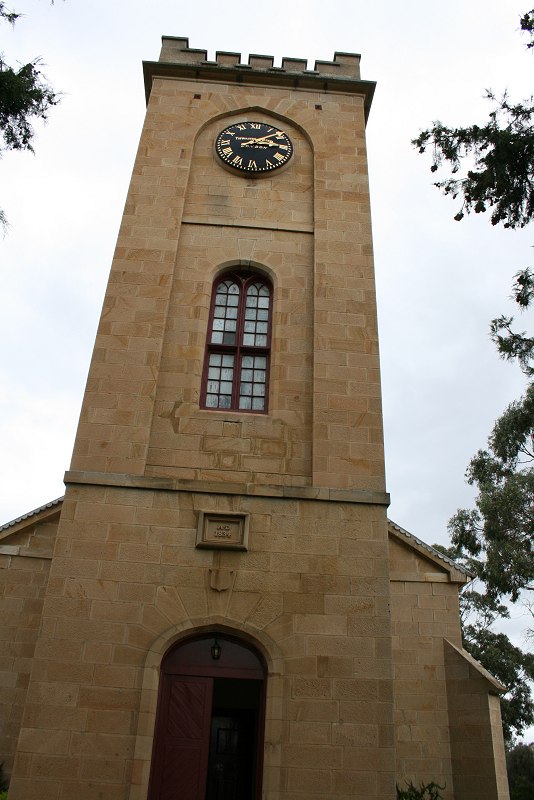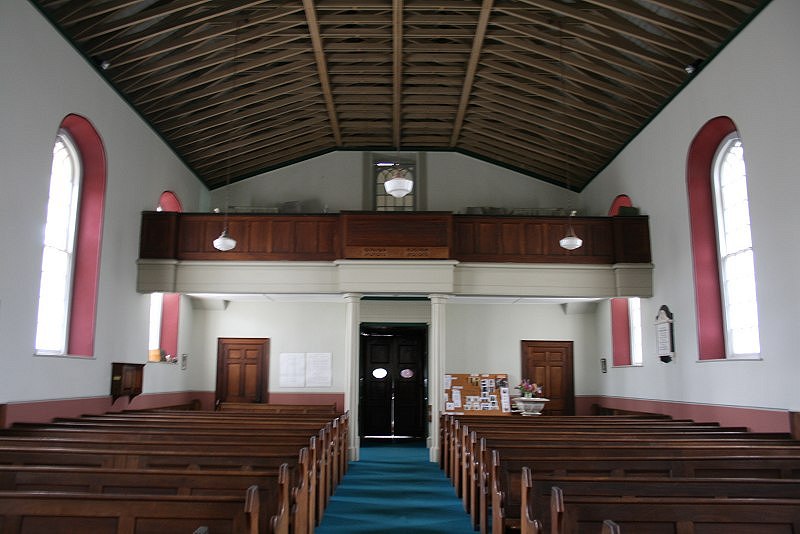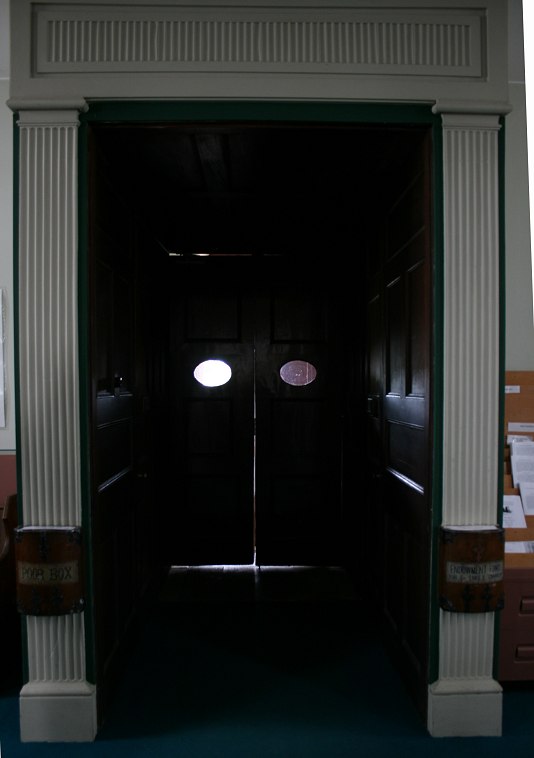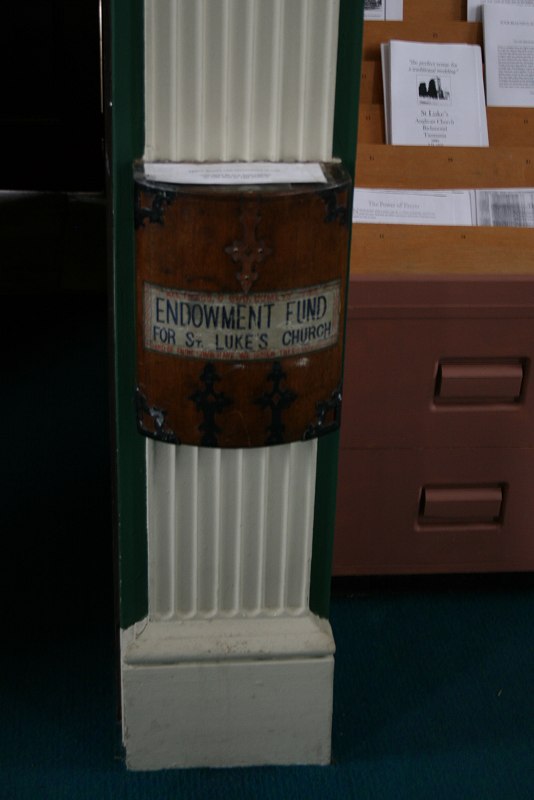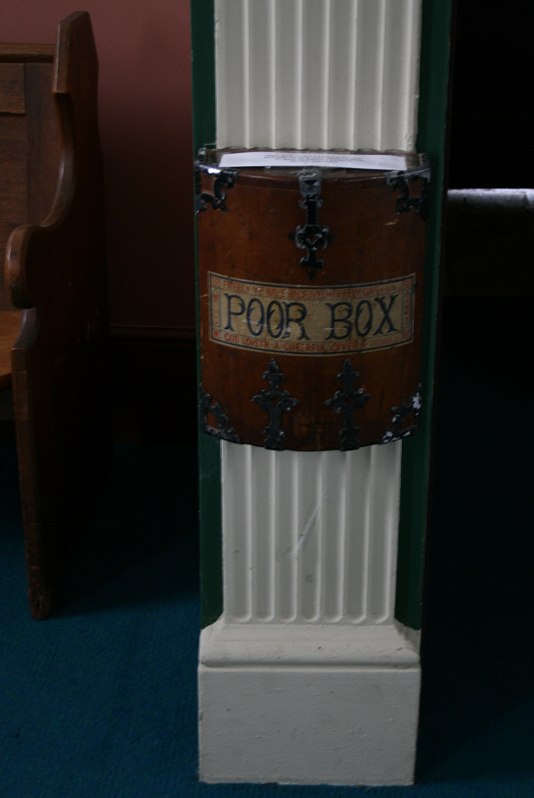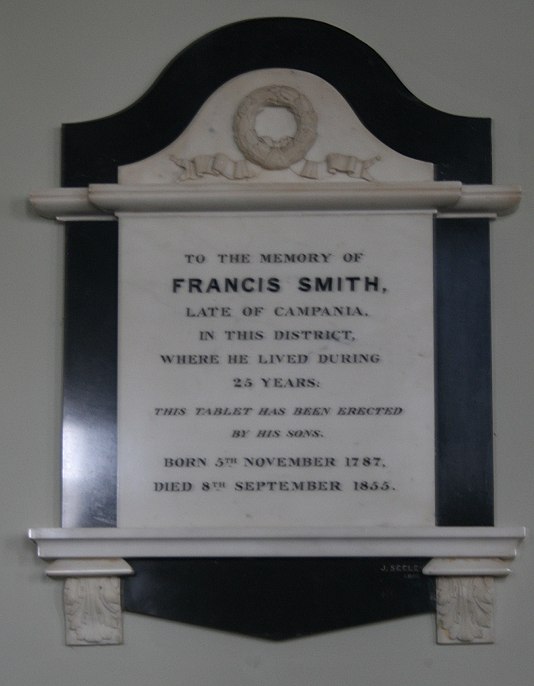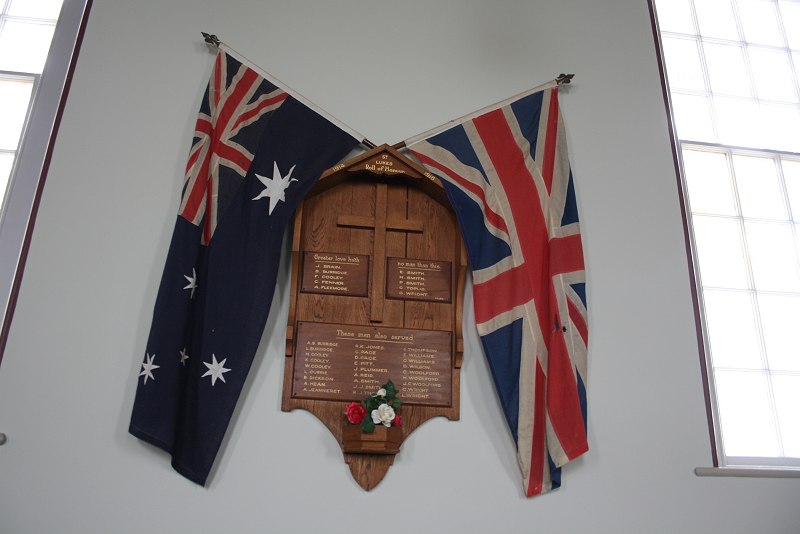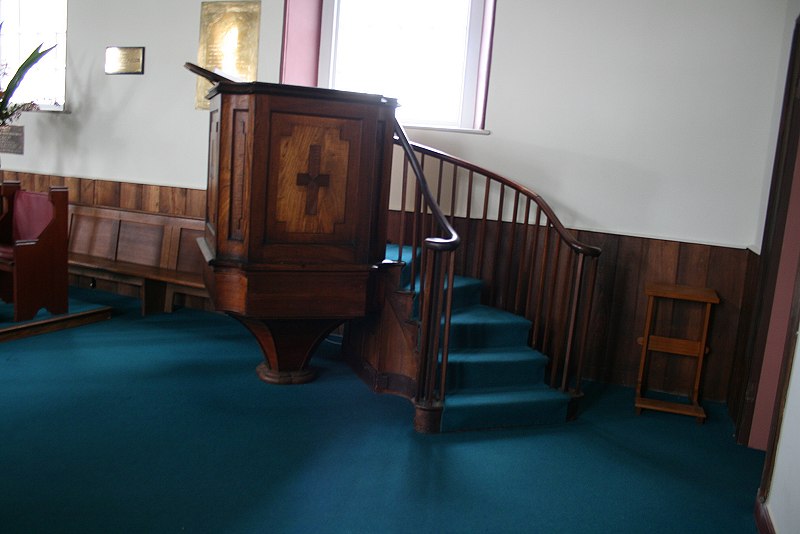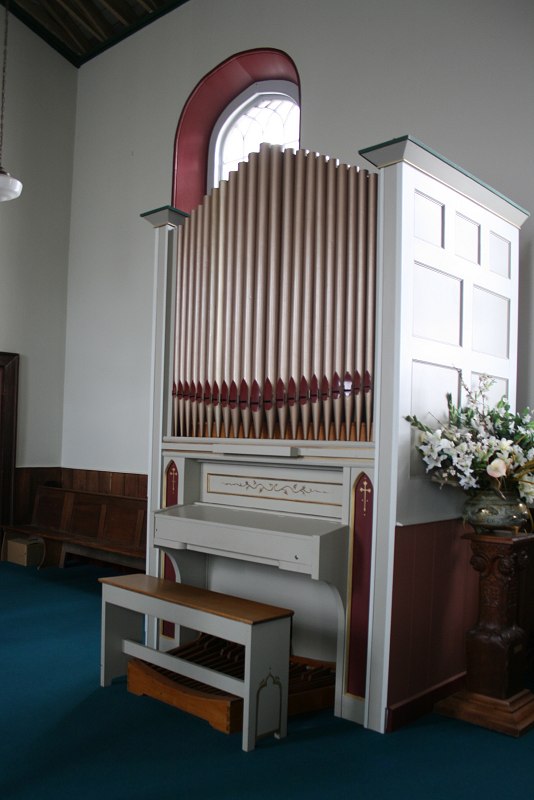Opened c. 1836
Church St, Richmond. Google Maps
Photos:
Stereograph, 1865
1928
Interior, c.1970
Prior to the church being constructed, services were performed by the minister from Sorell.
I believe there is no country place of worship in the Colony, where the congregation is more numerous, or more respectable, in proportion to the population in the neighbourhood than in the town of Richmond, and I have often seen the Court-house (our temporary chapel) crowded of a Sunday afternoon, when a threatening cloud has prevented the appearance of the Chaplain, who lives and performs morning and evening service alternately, at Sorell, a distance of eight miles. Many members of our congregation complain of the irregularity and uncertainty of the hours at which morning and evening service commence ; for we have no public clock nor bell, though I believe several church bells have been sent from England for the Colonial chapels. And many of the congregation have been offended by observing that the commencement of the service is not regulated by the hour of the day, but by the appearance of a certain family in the church.
Colonial Times, 6 July 1831
We are happy to see that the new church at Richmond is now in actual progress of building.
Hobart Town Courier, 3 January 1834
His Excellency Lieutenant Governor Arthur returned by Richmond, and laid the first stone of the church about to be erected in that township. Lieutenant Bayly, of the 21st Fusiliers, commanded the guard of honor, who attended upon His Excellency on the occasion. The day was extremely fine, and the inhabitants and residents of the neighbourhood assembled to witness so imposing a ceremony. His Excellency having laid the stone, the Rev. Mr. Norman delivered a very impressive and appropriate discourse.
Colonial Times, 29 April 1834
The clock was one of six turret clocks manufactured by London clockmaker Thwaites and Reed in 1828 for consignment to the fledgling Colony for use on public buildings. Commonly referred to as the ‘Richmond Town Clock’, it was installed at St Luke’s in 1922, having first been used in the original St David’s Church at the corner of Murray and Macquarie Streets, Hobart.
The clock was not installed in the new St David’s Cathedral when it was constructed in 1874 and it gathered dust for some fifty years before being given to St Luke’s in 1922 by the Dean and the Cathedral Chapter.
Tasmanian Anglican, November 2004
At the time of the church’s 75th anniversary in 1909, the Mercury published an interesting history of the church compiled by the Rector. It’s a long article but part of it is below:
“In 1834 a movement was made to cut Richmond off from Sorell, and to form it into a separate parish. This was finally done in 1835. And Mr. Norman, who succeeded Mr. Garrard, confined himself to the Sorell district, where he continued to minister until 1867.
“A start was made with the erection of a church at Richmond. The foundation-stone of the Church of St. Luke was laid in that year by the Governor of the colony. One of the present inhabitants of Richmond, Mr. Philip Jacobs, remembers as a boy being present at that ceremony. The church was erected on land given by Mr. Butcher. In consideration of this gift, there was granted to the Butcher family a right-of-way through one of the vestries to their pew at the top of the church. This right was carefully guarded for very many years, but is now fallen into disuse.”
[continued below]
“The stone for the church was quarried from the hill overlooking the township known at Butcher’s Hill. The Government granted the use of a number of convicts in building it, but I can find no record as to whether the Government also made a grant of money towards the cost of erection. A part of the money required was raised by public subscription among the residents in sums ranging from five pounds to twenty-fire guineas. About two hundred and fifty pounds was raised in this way. These subscribers did not actually give the money. It was rather that they advanced it, and it was returned to them in pew rents. That is, they paid no pew rents until the amount of their subscription was liquidated. The pew rents were fixed in 1836 by the wardens, with the sanction of the Governor, at five shillings each sitting, the pews numbered 1 to 6 inclusive to be charged as seven sittings, and the others as six.”
…
“The church seems to have taken some time in building, for it was not completed till 1836. I have already said that it was built by convict labour. Convict life was held very cheap in those days. The lash, or even death, was the punishment for offences not counted very serious to-day. And it is more than likely that the rising walls of the church saw the spilling of human blood. The curses of the convicts must have been built into those walls. We hardly dare think of it. The earliest associations of the church reek with crime and infamy. But there is one bright spot even in the building. There is a tradition that the convict responsible for the timbering of the roof received his liberty for the splendid way in which he did his work. The roof, as seen from the inside, excites the admiration of everyone that sees it. To us today it looks almost unnecessarily strong.”
[continued below]
“The first occasion on which the church was publicly used was the marriage of Mr. William Chambers with Miss Mary Heyward, on the 11th of March, 1836. The church was not properly finished even then. The flooring was not all in. Boards had to be laid upon the joists to allow the wedding party to reach the top-end of the church. But the parties to be married put up with these little inconveniences in order to make sure of being the first to be married in the new church. When they brought their first baby to be christened the chaplain presented them with his own Bible that he used in the pulpit. Mr. Chambers was the sexton of the church, and his descendants still live in the township.
“The parish registers contain entries before this date. The first baptism re-corded took place on August 23, 1835. And the first burial on December 6 of the same year. But, of course, neither of these need have taken place in the Church itself. It is interesting to note that the oldest tombstone in the burying-ground, which is some little distance from the church, bears the date 1823.
“As soon as the church was opened there was quite a rush of marriages, as many as three taking place on the one day, and a total of twenty in the last nine months of the year 1836. One more interesting fact. The last publication of banns in the church took place in the year 1869. The banns were forbidden at ‘the first time of asking,’ and by the bride-elect herself. History gives no reason for her thus drawing back at the eleventh hour. But the forbidding of the banns must have caused a great sensation. And future bridegrooms were evidently afraid to risk such another exhibition. For that was the last of the publication of banns.”
